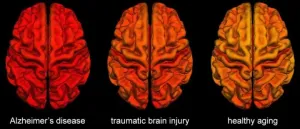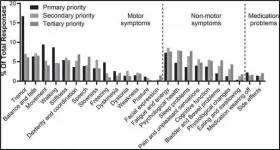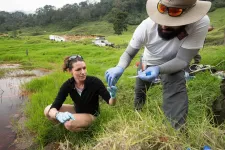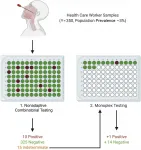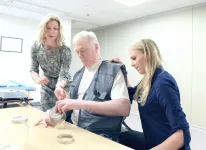Blood transfusions in cats: A precious resource requiring a considered approach
2021-04-26
(Press-News.org) Blood transfusions are a common procedure in medical practice in which donated blood is used to replace blood lost to injury or surgery or to treat serious medical conditions. The procedure is not performed as routinely in the treatment of pet cats - but, as in people, can be lifesaving. The availability of donors has been a limitation in primary care veterinary practice, but with the growth of blood banks providing greater access to feline blood, the procedure is likely to become more commonplace.
To address the need for authoritative guidance, not only on best practice but also some important considerations beyond the clinical procedure itself, the International Society of Feline Medicine (ISFM) has today published consensus guidelines in the Journal of Feline Medicine and Surgery (JFMS).1 The authors, an international panel of veterinary experts with individual expertise in infectious disease, anaesthesia, critical care and medicine, have cumulative clinical experience in the collection of blood and administration of transfusions gained in the treatment of thousands of feline patients.
Blood is a precious resource harvested for the benefit of one cat (the recipient), with no benefit for the other (the donor). A basic tenet of the ISFM's advice is that the clinician has responsibility to care appropriately for both parties.
Managing a patient that requires a blood product is clinically challenging. Identifying the need for a blood product is just the first step. The clinician needs to establish a clear-cut benefit to the recipient and, critically, must ensure that type-compatible blood is administered. This requires blood typing of both the donor and recipient cat. Whether an individual is type A, B or AB in the so-called 'AB' blood group system that exists in cats is partly influenced by geography as well as by breed. Type A is the most common phenotype worldwide, and Siamese cats, for example, are believed to be exclusively type A. Type B is much lower in prevalence, though is reported to be not uncommon among non?pedigree cats in Australia and also among British Shorthair cats. Type AB is rare.
Blood types arise due to genetically determined antigenic markers (alloantigens) present on the surface of red blood cells. Cats, unlike dogs, possess naturally occurring alloantibodies against 'foreign' (non?self) alloantigens. This complicates the process of blood transfusion and can lead to potentially fatal blood transfusion reactions. While the risk of a transfusion reaction increases with subsequent transfusions, a reaction may arise even with a first blood transfusion. In addition to blood typing, the guidelines discuss the benefit of 'cross-matching', whereby blood from the donor and recipient cat are mixed to test for a reaction before a transfusion is undertaken, and strongly recommend that cross-matching is undertaken for any recipient with an unknown transfusion history or that has had a previous transfusion reaction.
One of the particular challenges surrounding blood transfusion in cats is that there are risks also to the donor - in terms of the sedation that is often required, as well as the venepuncture and removal of blood itself. Although careful technique can help mitigate the risks, this represents a relatively unique situation in clinical veterinary practice in that a specific intervention has no benefit for the donor animal. Indeed, in an accompanying appendix discussing the ethical considerations of blood transfusion, the guidelines acknowledge that 'donor' may be inappropriate in this context, as it implies consent or a 'gift' that cats themselves are unable to decide to give. 'Harvesting' may be a more accurate, albeit less comfortable, term for blood collection.
Often donors are cats owned by clinic staff, or other cats belonging to the owners of recipient cats; sometimes donor cats may be volunteered after a public appeal. Many veterinary clinics maintain a register of suitable donors to call upon when needed. In some areas, unowned cats may also be used. The guidelines emphasise that the clinician's duty of care extends to the owner or caretaker of the donor cat, who must be well informed of the process and risks. To assist in this, International Cat Care, the parent charity of ISFM, has created a resource (available at icatcare.org/advice/cat-carer-guides) explaining what to expect if owners are considering volunteering their cat as a blood donor or, indeed, if their cat is requiring a blood transfusion. Where pre-collected blood products are purchased via a blood bank, the provenance of the blood products, and welfare of the donors supplying the blood bank, must likewise be confirmed by the clinician.
Well-informed decision-making around the use of blood products in cats requires the veterinary clinician to carefully balance the clinical benefit to the recipient cat, the suitability and welfare of the donor cat, and ethical justification for the procedure. The aim of these new guidelines is both to facilitate this process and help to ensure that the health and wellbeing of recipient and donor cats is equally prioritised.
INFORMATION:
References
1. Taylor S, Spada E, Callan MB, et al. 2021 ISFM consensus guidelines on the collection and administration of blood and blood products in cats. J Feline Med Surg 2021; 23: 410-432. Available at: https://journals.sagepub.com/doi/full/ 10.1177/1098612X211007071
[Attachments] See images for this press release:

ELSE PRESS RELEASES FROM THIS DATE:
2021-04-26
From Cat's-Whisker detectors in the early 1900s to electronic circuit chips in modern-day mobile phones, electronic devices have been modified in myriad creative ways to adapt to the needs of humankind. Apart from increasing the efficiency of conventionally used semiconductors such as silicon, recent research has focused on exploring more cost effective semiconductor materials. In tune with these requirements, a new publication in Nature Materials has successfully tweaked low cost semiconducting materials, quite similar to the composition of plastic, into conducting electricity more efficiently than before.
Solar cells have the property to convert ...
2021-04-26
A study by a University of Illinois Chicago pediatric dentist has shown a novel way to track potential COVID-19 cases -- testing children who visit the dentist. The study also showed an over 2% positivity rate for the asymptomatic children tested.
Dr. Flavia Lamberghini, UIC clinical assistant professor in the department of pediatric dentistry, has co-authored the article, "Severe acute respiratory syndrome coronavirus 2 infection in asymptomatic pediatric dental patients," in the April 2021 issue of the Journal of the American Dental Association. Co-authors are Dr. Fernando Testai, UIC professor ...
2021-04-26
Brain changes in people with Alzheimer's disease and in those with mild traumatic brain injuries (TBIs) have significant similarities, a new USC study shows, suggesting new ways to identify patients at high risk for Alzheimer's. The findings appear this week in GeroScience.
TBIs, which affect over 1.7 million Americans every year, are often followed by changes in brain structure and function and by cognitive problems such as memory deficits, impaired social function and difficulty with decision-making. Although mild TBI -- also known as concussion -- is a known risk factor for Alzheimer's disease, ...
2021-04-26
Amsterdam, April 26, 2021 - Individuals with Parkinson's disease (PD) face a wide range of symptoms and challenges. A team from Parkinson's UK, including several Patient and Public Involvement (PPI) contributors, surveyed patients to find out which PD symptoms troubled them most and how priorities may change with condition duration. Their goal was to identify where improved treatments and strategies are most needed to help maintain independence and quality of life. They report their findings in the Journal of Parkinson's Disease.
"While PD has some common features such as tremor, rigidity, and bradykinesia, the disease is highly varied, with each individual experiencing their own unique blend of symptoms ...
2021-04-26
Violent continental collisions and volcanic eruptions are not things normally associated with comfortable conditions for life. However, a new study, involving University of Tennessee, Knoxville, Associate Professor of Microbiology Karen Lloyd, unveils a large microbial ecosystem living deep within the earth that is fueled by chemicals produced during these tectonic cataclysms.
When oceanic and continental plates collide, one plate is pushed down, or subducted, into the mantle and the other plate is pushed up and studded with volcanoes. This is the main process by which chemical elements are moved between Earth's surface and interior and eventually recycled back to ...
2021-04-26
A Lancaster University professor has introduced a new concept for rapidly analysing for the presence of a virus from colds to coronaviruses.
Based on analysing chemical elements the methodology, which has been adapted from an analytical technique used to identify metallic nanoparticles, is able to detect the presence of viruses within just 20 seconds.
Although the tests would need to be performed in a lab, it could be used to quickly identify whether people admitted to hospitals have been infected by a virus - enabling clinicians to decide treatments and also whether to admit patients into isolation wards.
The ...
2021-04-26
DETROIT (April 26, 2021) - A new study by Henry Ford Health System published in Arthroscopy: The Journal of Arthroscopic and Related Surgery may signal a first step toward eliminating the use of opioids to relieve pain after knee surgery.
A novel multimodal pain management protocol developed at Henry Ford can bring about immediate pain relief for knee injury patients without using powerful opioids like morphine, codeine, and oxycodone.
"Orthopedic surgeons can now perform meniscal knee surgery without the need for prescribing opioids whatsoever," said Toufic Jildeh, M.D., chief resident at Henry Ford's Department of Orthopaedic Surgery and the study's lead researcher. "We believe this non-opioid approach can be replicated for other types of orthopedic ...
2021-04-26
Philadelphia, April 26, 2021 - Fast turnaround of COVID-19 test results for healthcare workers is critical. Investigators have now developed a COVID-19 testing strategy that maximizes the proportion of negative results after a single round of testing, allowing prompt notification of results. The method also reduces the need for increasingly limited test reagents, as fewer additional tests are required. Their strategy is described in the Journal of Molecular Diagnostics, published by Elsevier.
There is an urgent need to reduce the spread of COVID-19 transmission in hospitals and care facilities and to maintain adequate levels of staffing. Group testing strategies with pooled samples have been proposed to increase capacity; however, the currently used strategies ...
2021-04-26
Buyer beware: single-family homes in floodplains - almost 4 million U.S. homes - are overvalued by nearly $44 billion collectively or $11,526 per house on average, according to a new Stanford University-led study. The study, published in Proceedings of the National Academies of Science, suggests that unaware buyers and inadequate disclosure laws drive up financial risks that could destabilize the real estate market. The threat is likely to grow as climate change drives more frequent extreme weather. (WATCH VIDEO: https://www.youtube.com/watch?v=n18s5kcE0So)
"The overvaluation we find is really concerning, ...
2021-04-26
Results of a study co-authored by MGH Institute of Health Professions researcher Teresa Kimberley, PhD, PT, have the potential to be one of the most impressive advances in decades to help improve the lives of patients who have had a stroke with resulting arm weakness.
In an article published April 22 in The Lancet, "Vagus Nerve Stimulation Paired with Rehabilitation for Upper Limb Motor Function After Ischaemic Stroke (VNS-REHAB): A Randomised, Blinded, Pivotal, Device Trial," the study reports that patients who incorporated vagus nerve stimulation during physical or occupational therapy showed 2 to 3 times the improvement in arm and hand function compared to those who received intense rehabilitation with sham stimulation.
"How ...
LAST 30 PRESS RELEASES:
[Press-News.org] Blood transfusions in cats: A precious resource requiring a considered approach

